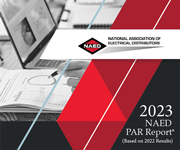The U.S. Department of Energy’s Next Generation Lighting Systems (NGLS) program, managed by the Office of Energy Efficiency and Renewable Energy, is launching the next phase of evaluations of indoor connected lighting systems. The initial phase, which began in 2017, evaluated 12 systems installed in working classrooms at New York City’s Parsons School of Design, The New School. The new phase will include the upgrade of the existing systems, as well as the addition of new systems that are also marketed as easy to install and configure and consist of LED luminaires with integral, luminaire-level sensors and controls. The systems will be evaluated over a two-year period for installation, configuration, control operation, lighting quality, energy savings, and user satisfaction.
Connected lighting has the potential to improve lighting control, saving 30–40% of lighting energy use in buildings through dimming, occupancy sensing, and other optimization functions.1 But early connected lighting systems face some of the same perennial challenges as traditional lighting controls: they can be complicated and difficult to configure and commission. What’s more, these challenges typically don’t reveal themselves until systems are installed in real buildings. This is why NGLS—a government-sponsored program tasked with quantifying technical challenges and fostering solutions that can be applied across the lighting technology development space—has convened this unique “living laboratory” approach. Within the living laboratory, NGLS evaluators observe configuration challenges across multiple lighting systems in real-time, an impossibility for any individual technology manufacturer to carry out themselves due to cost, time, and competitive constraints. The findings synthesized by NGLS are then made publicly available to the benefit of lighting technology developers, specifiers, installers, and users.
The initial indoor evaluations—representing a range of manufacturers, control systems, and luminaire types—have yielded valuable insights regarding the variety of approaches to system architecture, operational complexity, configuration tools, wall controls, and documentation. The findings from the current upgrades and installations will be published online, augmenting the repository of lessons learned from the initial phase.
Connected lighting systems that are overly complicated and time-consuming to install and configure often do not perform to expectations, and therefore do not achieve the anticipated performance or energy savings. NGLS is conducting observational research in real-world settings in order to identify the “pressure points” in configuration complexity—observing and evaluating real people installing and configuring connected lighting systems in real-time. This evaluation process compares multiple approaches in a single environment, yielding insights that cannot be obtained in a demonstration, mockup, or laboratory setting. The observations reveal areas for improvement and identify approaches that work. System approaches and practices that minimize configuration complexity are then widely shared with the entire industry. In contrast, industry research (which is not shared) typically has a narrow focus that can limit broad solutions to configuration complexity.
Takeaways From The Initial DoE Testing
- The complexity of system architecture and its influence on ease of installation and use is a direct reflection of system capability. More elaborate systems can do more but often at the expense of being easy to set up and use. Specifiers and end-users should assess their requirements carefully and look for systems that do not add unneeded complexity.
- Systems with more complex architecture need clear instructions with “big picture” guidance of how all the components fit together. Diagrams and quick setup advice can also be helpful. It is especially important for installers to understand the correct placement and operation of sensors.
- Specifiers need to find the appropriate balance between simplicity and functionality for each application. It’s important to consider whether these additional features will be clearly understood and implemented, or whether they’ll create complexity, cause frustration, and eventually be disabled.
- Phone apps, according to installers, show the most promise because they are accessible and familiar. To be successful, phone apps must be well designed, intuitive, and readily available. Internet-enabled computer front end tools appear to be more suitable for complex systems with more functionality that are intended for larger, integrated projects.
- The variety of approaches employed by manufacturers makes it difficult for users to understand how to interface with the control functions. For the easy-to-install market, it may make sense for there to be some industry consensus on the type and operation of typical wall controls. NGLS is willing to provide a platform for discussion and collaboration in this area, if needed.
The Department of Energy is also testing outdoor systems this summer. There is still no date for the release of their findings.






